Lance Armstrong had to wait 17 years for his first.
Cadel Evans managed it three times in one season.
Speak to any group of cyclists and it’s almost inevitable one of them will have broken their collarbone. Or as one study put it in the dry language of academia:
“there was a statistically significant association between cycling practice time and frequency of clavicle fractures”.
No shit Sherlock.
According to the research* if you’ve been riding more than 10 years or training more than 10 hours a week the chances are nearly one in four, although surprisingly there was no correlation to number of races.
So I guess at 52 I was doing pretty well to be a late joiner to the Collarbone Club.
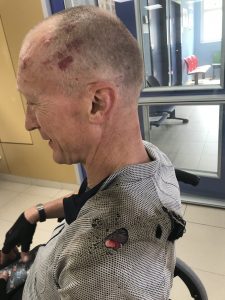
I liked that jersey…
A cycling holiday in the Basque region of Spain was cut short by a crash which I still can’t quite explain. A little mist, a corrugation in the tarmac, a moment’s inattention as I started a descent… who knows.
What I did know almost immediately was that this was a not a crash I was going to be riding away from, tube clenched between my teeth in the style of Fiorenzo Magni. All those classic TV images of pro cyclists looking like a wounded bird surrounded by wheels and broken carbon suddenly made sense. You just know.
Happily my bike was OK and I was with a supported tour group who were able to scoop me up and take me to the nearest hospital (the Basque word is ‘klabikula’ if you ever need it, thank me later).
Patched up to seek further advice on my return to the UK I had plenty of time to put together this handy guide based on research and personal experience for anyone thinking of breaking their own collarbone. (Disclaimer – proper medical advice is here.)
What is it?
They say the collarbone is designed to be broken. It’s like a suspension strut between the breastbone and shoulders and it anchors a lot of ligaments. It absorbs impact up to a point and for cyclists who fall on an outstretched arm the collarbone often tends to break first.
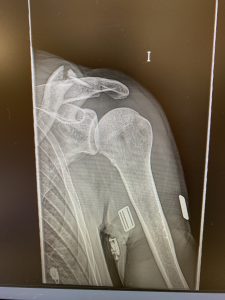
Yep, it’s broken.
You’ll probably be able to feel the break, assuming nothing has broken the skin. And head to the hospital as soon as you can, unless you have to finish a stage of the Tour of course.
How is it treated?
You may be given a sling or an immobiliser, like a figure of eight that goes around your neck and shoulders. I was told that in the UK medical opinion is against these because they don’t help healing. My own experience was that the immobiliser was good in the early days to just take the weight of the arm. And a sling is a good visual cue for others not to engage in any shoulder-punching camaraderie just yet.
Like any bone it can be a simple break or a complicated one with possibly several pieces. I learned a new medical word ‘comminution’ which is a nice way to say splintering. Silver linings and all that.
Your doctor will discuss the options which boil down to surgery or just leaving it to heal but some basic questions will be:
- Is the bone reasonably aligned? It’s broken but how close together are the pieces and can they join up. You might be sent for a CT scan to give different angles from an X-ray.
- Is it going to be the same length? The chances of problems with the rotator cuff in your shoulder are increased by collarbone injuries and more so if the bone heals shorter.
Surgery will be more likely if the answer to those questions is no. In that case a metal plate and pins will be used to hold the bones in place while they repair themselves.
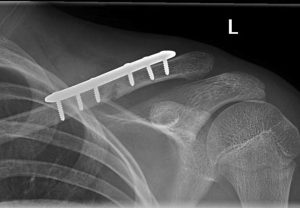
In terms of recovery time there isn’t a huge difference between healing and surgery, although it will probably reduce pain more quickly.
The other advantage of surgery is that you know it’s fixed. If the bones don’t heal naturally then in two or three months you’re going to have had a lot of pain and still need surgery to start again. This certainty is the main reason why pros often go for the surgical route.
On the other hand leaving it to heal means avoiding the general, although small, risks attached to any surgical procedure. It’s also quite common in people with lean builds like cyclists to want to remove the metal at a future date – that means another operation and another period of recovery while the bones are in a weakened state with holes left by screws.
In my own case the complicating factors were the splintering, sorry ‘comminution’, and also a hairline fracture running along the bone. This would have meant a quite large plate to extend past those areas so the body was left to do its work.
Recovery
As I write this I’m only a little more than four weeks past the accident. I was on the trainer indoors in 10 days and did my first track session at four weeks to the day.
Unless the fracture is unstable or painful then it’s just a matter of doing what you can bear, quite literally. The main risk is another injury while the bone is still recovering so try not to crash, as my wife often helpfully suggests. Official NHS advice is not to return to any contact sport for 8 weeks.
What’s actually happening inside takes place in three stages.
- Inflammation – blood rushes to the area and a hematoma or blood clot is formed around the broken bones. This lasts for about a week.
- Repair – cartilage and tissue, known as a callus, is formed around the end of the broken bones and these gradually rejoin over 2-3 weeks. The callus transforms into a spongy bone structure.
- Remodelling – the spongy bone becomes classic hard bone with blood vessels inside as the fractures are rejoined. Sometimes a swelling or lump remains over the end.
Can I do anything?
There are some useful NHS and other guides to beginning basic mobility and stretching and physiotherapy will be helpful in terms of regaining strength.
Obviously the body has to work hard to repair the bones so good diet and rest are important. Some people report being very tired in the early weeks after a fracture and I had a few nights where I crawled into bed while it was still light outside.
With a healthy diet anyone should have enough nutrients. Supplements and natural remedies are a personal choice but general advice is to make sure you have plenty of protein and calcium. Vitamin D helps your body absorb calcium and Vitamin C helps produce collage, while iron and potassium (bananas) are also beneficial for blood and mineral absorption.
Apart from that it’s just a matter of time and recovery. Within 6-8 weeks the bones should be functionally re-formed and pain should have subsided, although the full healing process may continue for several years.
By that stage you may well have broken something else… happy riding.
*Nishimi AY, Belangero PS, Mesquita RS, Andreoli CV, Pochini AC, Ejnisman B. FREQUENCY AND RISK FACTORS OF CLAVICLE FRACTURES IN PROFESSIONAL CYCLISTS. Acta Ortop Bras. 2016;24(5):240–242.
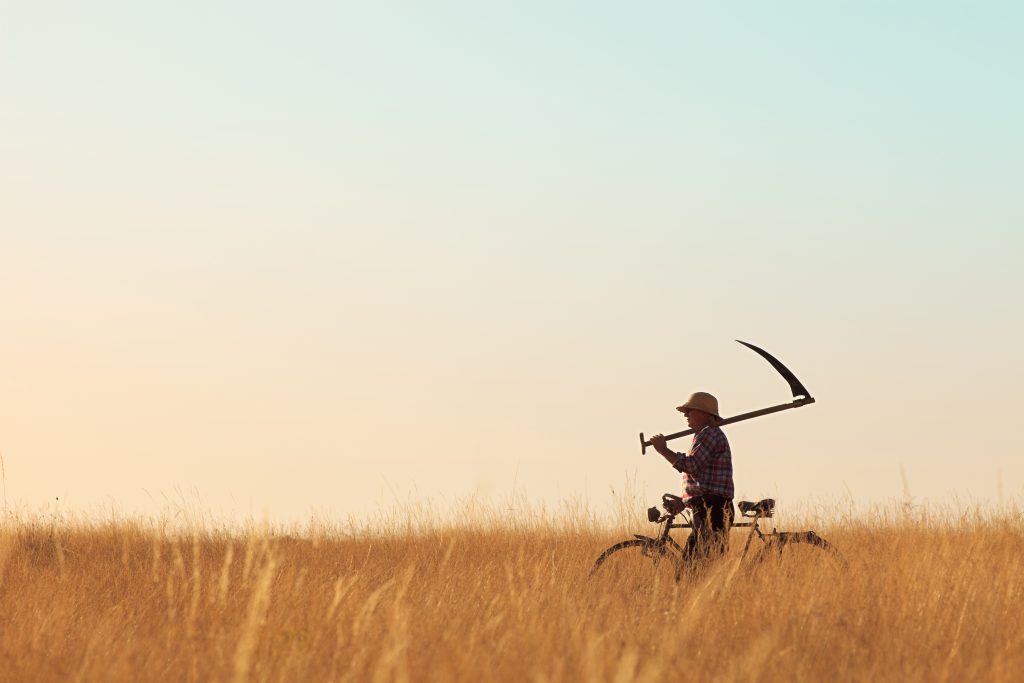
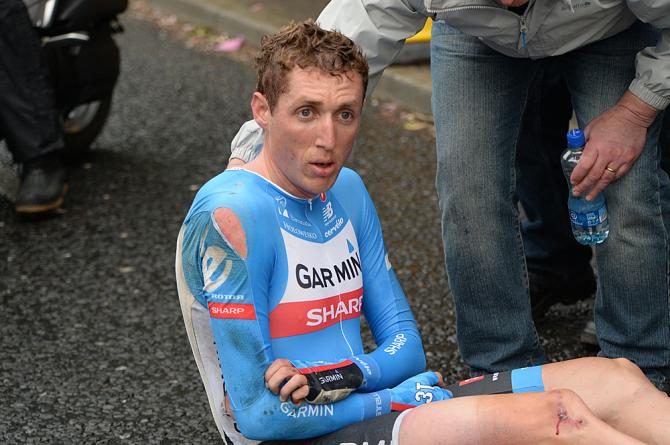
Thank goodness your bike was ok!
Wishing you all the best for your healing!
(I’ve done my left wrist twice to break the fall!)
Ouch! Wishing you a speedy recovery. My wife is the “crasher” in our family.
Ouch. I don’t want to tempt fate but so far I’ve avoided the club though I’m a signed up member to the broken rib club on two – or was it three – occasions.